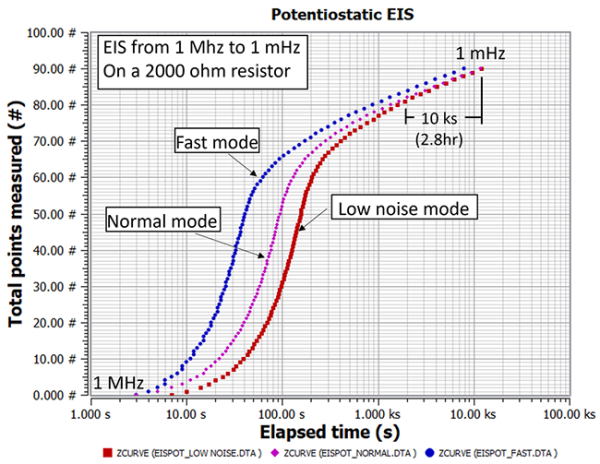Multisine and Length of an EIS Experiment
Four factors affect the length of an EIS experiment:
- Frequency range (Initial Freq. and Final Freq.)
- Points/decade, which is the density of data in the impedance spectrum
- Excessive noise, which forces the algorithm to measure more cycles per impedance point
- Sampling mode, which affects the minimum and maximum number of cycles required per impedance point
#1 and #2 are self-explanatory and can be adjusted to optimize the length of your EIS experiment. If you notice the Lissajous plot or “FRA curve” displayed during your EIS experiment shows erratic or noisy behavior, consider using a faraday cage to alleviate the excessive noise (#3). Lastly, you may adjust the sampling mode (#4) to prefer speed over the precision of the impedance measurement.
Three options are presented to the user as “fast”, “normal”, and “low noise”. Fast mode reduces the number of required cycles per impedance data point whereas low noise mode increases it. Normal mode falls in between and is the default setting. The effect of each sampling mode is shown graphically below. Note that the sampling mode becomes less important as the Initial Freq. parameter is set below 100 mHz.
Use Gamry’s Multisine EIS techniques to optimize the time required to collect impedance data at frequences below 100 mHz. This is especially important for high-capacity devices such as batteries and ultracapacitors.


